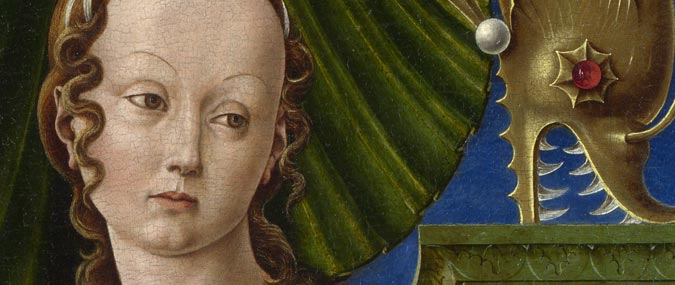The Fighting Temeraire
Ashok Roy, the head of the National Gallery’s Scientific Department, provides an insight into The Fighting Temeraire by Turner.
Find out why Turner’s unusual concoctions make his paintings particularly difficult to clean.
Art in the Making: The Fighting Temeraire
Transcript
Female Voice: The great Romantic artist J.M. Turner painted this picture of The Fighting Temeraire in 1836. Ashok Roy, Head of the National Gallery’s Scientific Department explains why Turner is often referred to as ‘a painting restorer’s nightmare’.
Ashok Roy: He particularly used unconventional paint media. So instead of taking ordinary oil paint, he would add things like wax, resin, non-drying fats and so forth. And this makes the pictures very difficult to treat and to conserve, largely because the paint medium often remains soluble, and it means that it’s very difficult to clean these kinds of pictures safely.
Luckily ‘The Fighting Temeraire’ is not one of those paintings. And in fact it’s quite conventionally painted using walnut oil as the binding medium. And it’s probably as a result of that fairly conventional technique that the picture, for a Turner, is in superb condition. And in fact, interestingly, he uses two particularly intense red pigments, opaque pigments in the sunset: the red pigment vermilion which was a traditional painter’s material, and also a newly-invented pigment called iodine scarlet or pure scarlet which had only been discovered in 1812 by the British chemist Sir Humphrey Davy. Unfortunately, it’s the one part of the picture where we know there’s been serious colour change because this particular pigment loses its colour... fades very quickly in the life of a picture.
Turner uses a great variety of tools. He uses brushes of all kinds, of different sizes and shapes, and he was also very keen on using the palette knife to create those impasto effects that you see in – for example – in the sunsets, as in this picture. You see these very sharp-edged applications of blocks of paint – thick paint – to create those textural effects as well as the colour effects you see in the picture.
I think this is a picture which has two absolutely stunning parts. There is the ship, the Temeraire itself and the tug which is painted in quite a different way from the surrounding seascape, and the dramatic sunset, which is really like an explosion at the horizon. And I think part of the power of the picture is the conjunction of the ghostly hull of the ship and that explosive drama of the brilliant sunset next to it.


